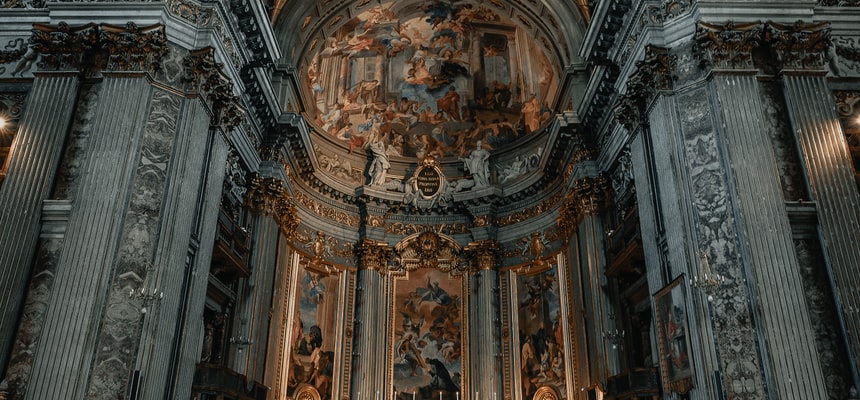
Suidger von Morsleben was born in Hornburg, Saxony (Germany) around 967. His parents were Count Konrad of Hornburg and his wife, Amilrad. Young Suidger went to Halberstadt to study and became a canon. In 1032, he became the chaplain for Archbishop Hermann of Hamburg-Bremen and, in 1035, chaplain for the royal household. King Henry rewarded Fr. Suidger with the see of Bamberg when the first bishop died in 1040. This sounds like a simple story of a cleric making his way up the ranks, right?
In the fall of 1046, King Henry of Germany organized a group to accompany him to Italy as he was crowned emperor of the Holy Roman Empire. He, along with a large army and several hundred clerics took off for Rome. Only a Pope could crown an emperor. He invited his chaplain, Bishop Suidger of course. There was another reason for his trip. At this time, he received an emergency request by laity and clerics of the city of Rome. Emissaries came requesting that the King sort out which of the three popes claiming the throne was the real one.
Henry gave Pope Gregory all honors as pope and listened to his reasoning but convinced him to voluntarily leave office. He deposed Popes Sylvester III and Benedict IX. The papal throne was now empty. The King asked Bishop Adalbert of Bremen to take the throne but he adamantly refused. Considering the situation in Rome, we can’t blame him. Adalbert suggested his friend, Bishop Suidger, the chaplain, who accepted.
Henry had no right to recommend a person to take the papacy. So, a number of members of the curia and the laity gave Henry the title of “patrician of Rome” so that he would have right of appointment to the papacy. This turned out to be a terrible mistake as many good men quickly discovered.
FINALLY, THERE IS A POPE, AGAIN
Bishop Suidger was crowned Pope on Christmas Day, 1046, taking the name Clement II. Within days, he crowned Henry and his wife Emperor and Empress of the Holy Roman Empire. There were a number of people who criticized Clement in the days following his coronation. A rule required a bishop to retain his see until death. Clement retained his see at Bamberg, but added another, Rome. His reasoning, apparently, was the bankruptcy of the papacy. Pope Gregory VI had emptied the coffers to pay Benedict off. Bamberg had an income. And Rome no longer had a guarantee of income. Clement’s second reason was probably just as important. With Rome running through Popes every few months, the position was certainly not guaranteed.
Clement chose to get to work right away on improving the status of the Church. For a very long time, the Church had been known as a place of theft, debauchery and economic gain for some Roman citizens. He immediately called for a synod in Rome, in January. The two most important items to come out of the synod were a ban on the sale of spiritual things and positions (a lucrative business). The punishment for these banned actions was excommunication. In addition, the new Popee also granted precedence of the diocese of Ravenna over Milan and Aquadeila.
When the good weather returned, Clement accompanied Emperor Henry in a triumphal procession through southern Italy. Then they continued on into Germany to canonize St. Wiborada of St. Gail.
On his return to Rome, Clement became ill and died on 9 October 1047, near Pesaro. The papal attendants carried the body back to Bamberg, the town he loved. And he was buried in the Cathedral. This makes him the only Pope buried north of the Alps.
Rumors quickly arose claiming he was poisoned.
In the mid twentieth century, scientists got permission to exhume the body and test it. It had very high levels of lead, implying poison. There are two current theories:
1. Benedict had his agents poison Clement, probably by putting litharge (lead oxide) in his wine. This dissolved easily in slightly acidic solutions and made the wine sweeter. After all, when word came that Clement was dead, Benedict returned to Rome in November 1047 and was reinstated. But Henry expelled him in July 1048 and replaced the old Pope with Poppa, Bishop of Buxen, now Pope Damasus II.
2. The Pope loved German wine and drank it copiously, which is true. The wine makers used litharge in small amounts which, over time, could kill the drinkers.
Either way, the bringing of Clement II to Rome substituted a new difficult time in the Church, replacing simony and debauchery with foreign control of the Church. Neither way was acceptable.

Recent Comments